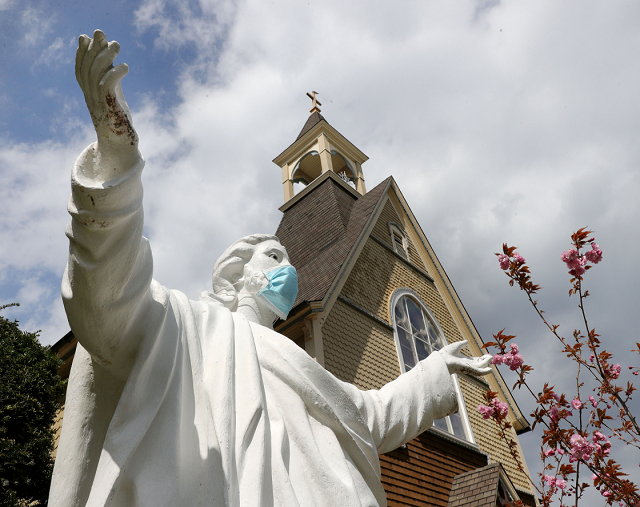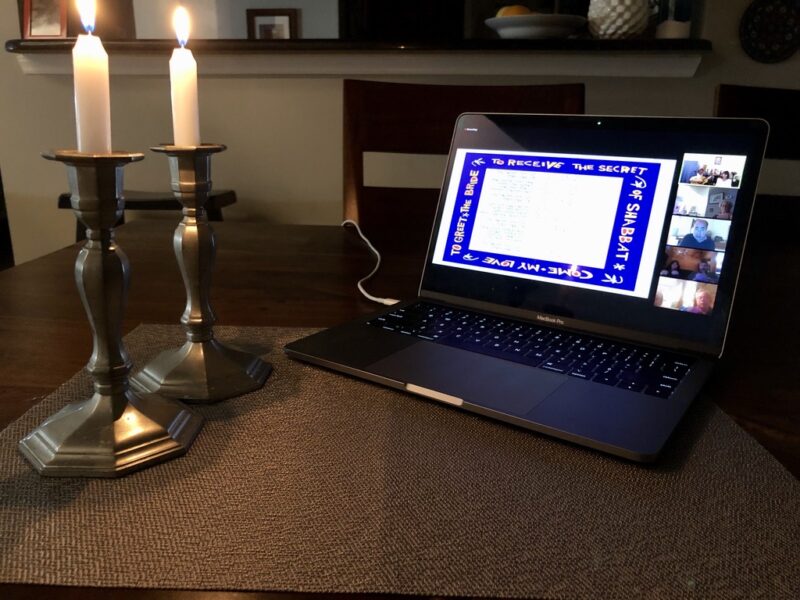The Pandemic Religion digital collection: documenting religious practice during COVID-19
13 October 2020 – Jessica Mack
When classes, conferences, and other large in-person gatherings moved to virtual platforms last spring in response to COVID-19, religious services were no exception. Under these circumstances, how have different religious communities adapted to practicing their religion remotely? To explore these and related questions, the Pandemic Religion project collects and preserves the experiences and responses of different religious communities in the U.S. during the COVID-19 pandemic.
The Pandemic Religion digital collection—a project of the Roy Rosenzweig Center for History and New Media (RRCHNM)—testifies to the shared challenges of connecting and maintaining rituals that all religious communities are facing during this time of physical separation. Building this collection in collaboration with religious institutions and individuals across the U.S. has generated moving reflections about community, ritual, and togetherness during a time of physical distancing. How are people attending to rituals of birth, coming-of-age, marriage, and mourning when time-honored practices are no longer possible? How have different groups grappled with closures and reopenings? Why have certain groups resisted public health directives or even questioned the seriousness of the crisis? Pandemic Religion reveals a kaleidoscope of answers to these questions that will help future historians, students, and citizens better understand the complexities of faith and religious practice during this moment.

Our Lady Star of the Sea Church in Atlantic City, New Jersey. Photo credit: Edward Lea, staff photographer “The Press of Atlantic City.”
The Pandemic Religion project takes a targeted, thematic approach to collecting and places particular emphasis on how the collection can be used by different publics and in virtual classrooms. Items are collected using the Omeka S platform and anyone can submit materials through the simple online collecting form. In this sense, the collecting process itself has introduced some users to the idea of digital collecting for the first time, drawing upon RRCHNM’s track record of collaboration with different communities on digital history projects. Pandemic Religion is also a valuable teaching tool for instructors teaching online who can use this guide to develop assignments that will help students connect the classroom to the events unfolding around them. When students and contributors help build an archive of the present, they begin to see themselves as historical actors and think more about how collections and archives of the past were constructed.
In July, RRCHNM launched American Jewish Life, a digital collection within the larger Pandemic Religion project that brings together the efforts of six partner organizations to preserve the experiences and responses of American Jewish individuals and communities during COVID-19. The most successful digital collecting efforts are collaborative, and AJL exemplifies the importance of working with a range of archives, museums, and educational institutions to reach contributors and users from different U.S. regions. The AJL partners are: the Breman Jewish Heritage Museum in Atlanta; the Capital Jewish Museum in Washington, D.C.; the Goldring/Woldenberg Institute of Southern Jewish Life in Jackson, Mississippi; Hebrew Theological College in Skokie, Illinois; the Houston Jewish History Archive at Rice University; and Yeshiva University in New York. From photographs of isolated graves and socially distant weddings to guidelines from rabbinical councils and Zoom seders, the rich materials in the AJL collection capture both the challenges and the hope of this moment. As a recorded prayer song submitted to the collection suggests, this is a time to be “Safe Together Apart.”

Photo of virtual Shabbat services. Photo credit: Capital Jewish Museum.
As you reflect on this moment, visit the Pandemic Religion collection and consider sharing your own experiences of religious practice during this time. The collecting form accepts media files (photographs, screenshots, videos, URLs, PDFs, audio files) as well as written narrative reflections. Follow along on Twitter, Instagram, and Facebook as we share fascinating materials that have already been added to the collection. This is a collective effort involving many different publics and communities, so share this invitation widely and join our efforts to document religious practice during this period.
~Jessica R. Mack is a postdoctoral research fellow at the Roy Rosenzweig Center for History and New Media at George Mason University and project manager of the Pandemic Religion digital collection. She tweets at @jrobinmack.



